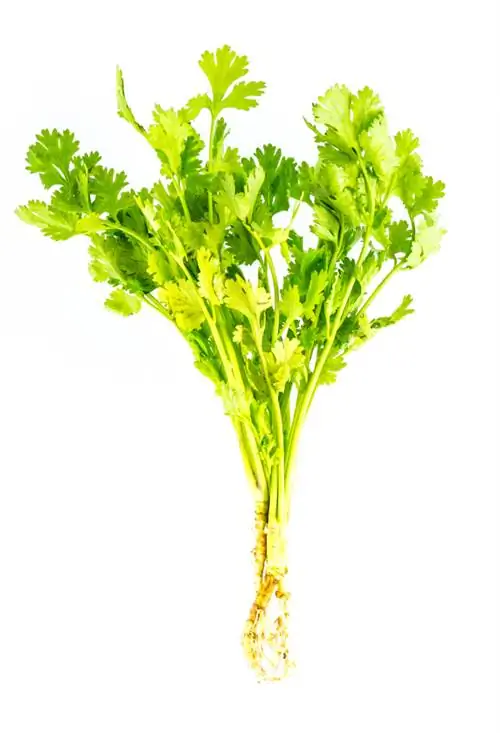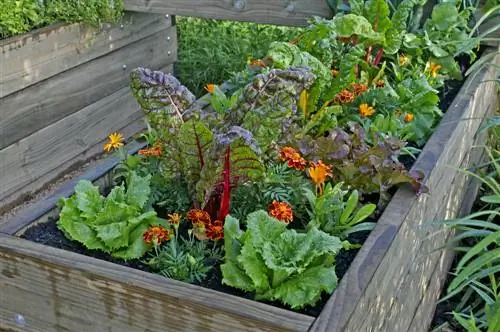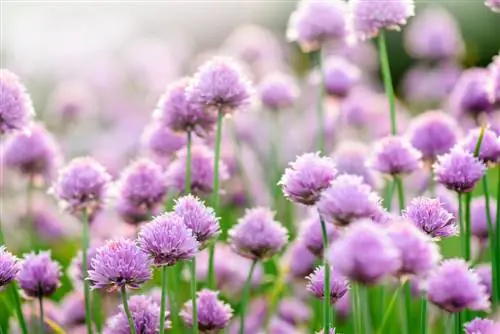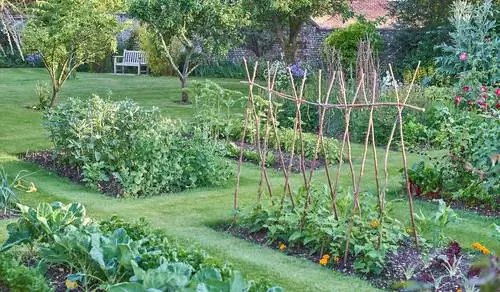- Author admin [email protected].
- Public 2023-12-16 16:46.
- Last modified 2025-01-23 11:20.
The parsley leaves, which just looked so beautifully green, suddenly turn yellow. This is due to the damage to leaves and roots known by gardeners as “parsley disease”. What you can do to ensure that parsley grows and thrives.
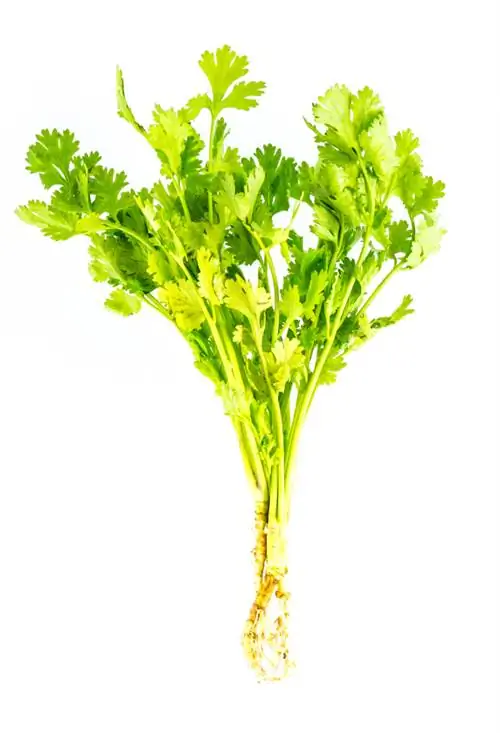
Why is my parsley turning yellow and how can I prevent it?
If parsley turns yellow, the cause may be incorrect location, crop rotation problems, incorrect irrigation or pests and fungal spores in the soil. For he althy parsley, choose a partially shaded location, observe crop rotation, water carefully and sow from August.
Four possible causes
Parsley is an idiosyncratic plant. If something doesn't suit it, it turns yellow, takes care of itself and eventually dies.
There are four serious mistakes you can make when growing parsley:
- Wrong location
- Crop rotation problems
- Too wet or too dry soil
- Soil contaminated by fungal spores and pests
Choose the right location
Parsley doesn't like it too warm and sunny. She prefers a partially shaded location. The soil should be rich in humus and very loose. Above all, crop rotation plays an important role.
Observe crop rotation
Parsley is highly incompatible with itself. There must not have been any umbelliferous plants on the parsley bed for three years.
In addition to parsley, this also includes carrots, dill, celery, fennel and all other umbelliferous plants. If these plants are grown on the same bed in subsequent years, the risk increases that soil pests and fungi will multiply uncontrollably.
Watering parsley properlyThe biggest problem when caring for parsley is watering. It should neither be too dry nor can it tolerate too much moisture or even waterlogging.
Make sure the soil is permeable so that rainwater or irrigation water cannot accumulate.
Pour the parsley carefully. Check with your finger whether the top layer of soil has dried and only then water again. But don't give too much water.
Soil pests and fungal spores as triggers for parsley disease
Soil pests such as root lice, nematodes, maggots and fungal spores feel particularly at home on the roots of umbelliferous plants such as parsley. These pests are often so small that you cannot see them with the naked eye.
If the pests have settled in the garden, this usually also affects the compost. If you use infected compost to improve the new parsley bed, you increase the risk of the parsley turning yellow later.
Prefer parsley in a pot or only sow from August
There are two solutions to growing strong parsley. Sow the herb in a pot with potting soil (€6.00 on Amazon) and don't plant it outdoors until August.
If you would like to sow outdoors straight away, wait until August. Then the main propagation period for pests and fungal spores is over and the parsley can develop into strong plants.
Tips & Tricks
If it happens frequently that your parsley does not grow outdoors and turns yellow, you should have the garden soil checked for fungi and parasites. Under no circumstances should you use contaminated soil from the garden as potting soil for culinary herbs on the balcony or windowsill.

